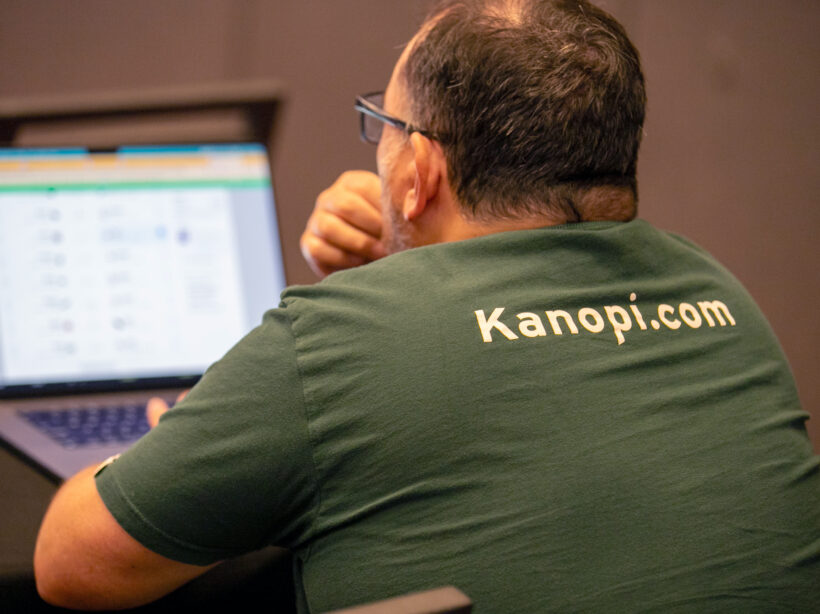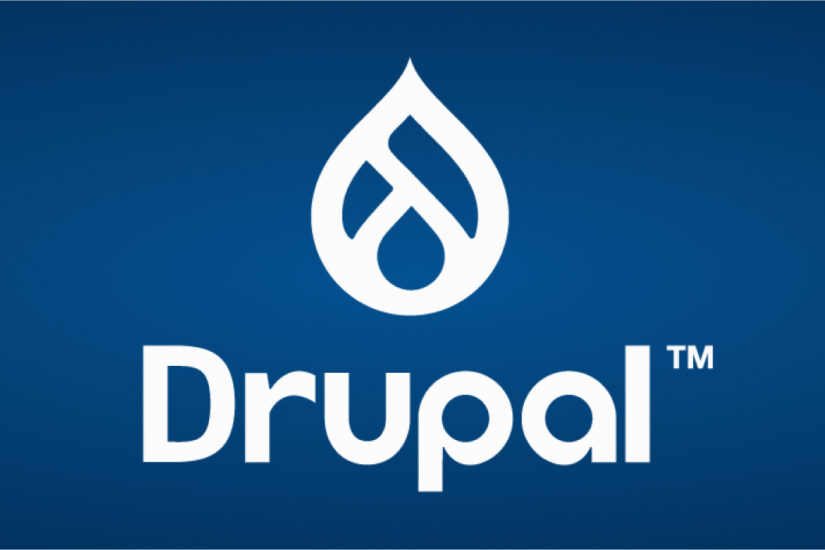What is a “headless” website?
In the ever-changing world of web development, staying ahead of the curve is crucial. Traditional monolithic websites have served us well, but as the demand for more dynamic, interactive, and flexible digital experiences grows, so does the need for more advanced solutions.
A headless website separates the backend (your content management system or CMS, such as Drupal or WordPress) from the front end (the user interface), allowing developers to deliver content via APIs to any device or platform. This architectural approach provides numerous advantages but isn’t appropriate for every project. So when does a headless website make sense for your business, and why might it benefit your next web development project?
When is a headless website the right choice?
Omnichannel Delivery
A headless CMS delivers content across multiple platforms — web, mobile, IoT (Internet of Things) devices, smartwatches, and more. The headless architecture empowers you to integrate and deploy content and experiences via APIs, ensuring consistency and flexibility across various channels. With a headless site, you can create content once and distribute it everywhere, enhancing your reach and user engagement. You can also create a single, unified experience that ties your disparate platforms together — so your CMS, e-commerce platform, membership program, and any other tool you can think of can be integrated into a seamless experience for your users.
Technical Flexibility
Headless websites offer unparalleled flexibility for projects requiring high customization and a unique user interface. Since the site decouples the front and back end, developers can build the user interface using any technology or framework (React, Vue.js, Angular, etc.). This freedom enables bespoke, highly interactive, and performance-optimized websites tailored to your business needs.
Improved Performance and Scalability
Headless websites can significantly improve performance and scalability. Decoupling the front and back ends allows you to optimize each layer independently. This separation allows for faster load times and a more responsive user experience. Additionally, it’s easier to scale different parts of the architecture according to demand, ensuring your website can handle traffic spikes without compromising performance.
Enhanced Security
Security is a paramount concern for any website. Headless architectures can enhance security by reducing the attack surface. Since the front and back end are separated, attackers find it harder to exploit vulnerabilities. Furthermore, APIs can be secured independently, and sensitive data can be better protected, giving you peace of mind.
Content Personalization and A/B Testing
Personalizing content for different user segments and conducting A/B testing are essential strategies for improving user engagement and conversion rates. A headless CMS makes these tasks straightforward and more efficient. By leveraging APIs, you can dynamically deliver personalized content and easily integrate A/B testing tools to optimize user experience in real-time.
Future-Proofing Your Digital Strategy
As technology continues to evolve, having a future-proof digital strategy is crucial. A headless architecture ensures your website can adapt to emerging technologies and platforms without requiring a complete overhaul. This adaptability allows your business to stay competitive and quickly respond to market changes and technological advancements.
Streamlined Workflow for Development Teams
Headless websites foster a more streamlined workflow for development teams. Frontend and backend developers can work simultaneously without dependencies, accelerating the development process. This parallel workflow reduces bottlenecks and enhances collaboration, leading to faster project completion and more efficiency.
When might a headless website not be the right choice?
While headless websites offer numerous benefits, they might only suit some projects. Here are a few scenarios where a traditional monolithic approach might be more appropriate:
Ease of Familiarity
WordPress or Drupal are well known to users and are known for their ease of use and user-friendliness. This familiarity makes it simple for non-technical users to update the site’s configuration.
Although a headless site can have content driven by WordPress or Drupal, technical knowledge is paramount when adding and updating configuration. A developer will usually be required.
Plugin/Module Ecosystem
WordPress and Drupal boast an almost endless ecosystem of plugins/modules that can extend the functionality and features of your website, from SEO to commerce, forums, and beyond.
A headless site can have its own suite of plugins, and if driven by WordPress and Drupal, some plugins/modules will play nicely with the headless front end. However, your pool of choice is drastically reduced.
Content delivery
Even if you do need to share content from your CMS with your mobile applications and other systems, you can still do so using Drupal or WordPress in a traditional CMS build. These platforms provide robust and customizable APIs that other applications can leverage, whether the main content site is headless or not.
This allows you to allow your CMS to do what it does best, manage content while serving the content you choose to the applications that need it.
Theming and Design
WordPress and Drupal both offer many free themes for almost every industry. Vendors in this space can build you a custom theme that is nearly endlessly flexible — and flexible to the content editor. This allows editors to create unique landing pages on the fly and move components around as they see fit without the need to bring in a developer.
Although a headless CMS has complete freedom when it comes to design, the design still needs to be implemented on the front end. This takes a lot of time and budget. Once built, that end product can actually be a bit rigid, requiring you to get a developer every time you want to create a different type of landing page or move a component above or below the fold.
Cost and Technical Debt
WordPress and Drupal will have a lower initial cost to build and maintain, even with maintenance, to ensure that all security updates are released in a timely manner. The pool of skilled developers and agencies is vast, and hosting partners offer automated updates, allowing you to find a maintenance package that fits your budget.
A headless CMS will require a significant investment to build initially and may cost more to maintain than a traditional CMS build. You are now maintaining two systems: your back end and your front end. Developers familiar with this architecture are highly specialized, and development may take longer or require more expensive and less widely available development resources. Depending on your hosting partner and final architecture, managing two hosting environments may also be a challenge: one for your front end and one for your back end.
Real-time Preview
WordPress and Drupal provide real-time feedback while managing content. They allow you to preview content before publishing it to the public. The instant visual feedback in the editor allows you to better illustrate your message by knowing how it will display on the front end.
While real-time preview in headless environments is becoming better and more prevalent, it can require a separate build process, which may slow down content creation.
Edit in Place
In a CMS such as WordPress and Drupal, editing in place (inline editing) has become common practice. It is supported by core WordPress or Drupal or by plugins and modules that add or expand it. Editing in place gives the content creator the ability to modify content directly on a webpage without having to navigate to a separate editing interface, much like you would in Google Docs or MS Word.
Editing in place on a headless website is possible, but may be more complex. Using plugins to bring inline editing into your site requires up-front investment and development efforts. One of the main differences here is that plugins on a headless site are not plug-and-play and often require development efforts to ensure that they work correctly without issues across the entire breadth of your site’s content.
Page Caching
WordPress, Drupal, and the respective hosting partners that specialize in managed hosting handle page caching extremely well. Whether you publish a new page or update an existing one, the CMS knows the ID of the page being created/updated and clears only that page’s cache on the front end immediately. When this does not happen, it is usually due to aggressive caching practices that a vendor can help you tailor to your needs.
Rebuilding a page’s cache in a headless CMS can be cumbersome and require revalidating large sections of your site at once — sometimes even the entire site. It can result in a large performance hit just to publish a simple content update. Maximizing performance with aggressive caching on the front end can prevent content from going live until the next time the site cache is cleared or the API data refreshes.
SEO
WordPress and Drupal have a vast number of SEO features built-in and provided by contributed plugins/modules. Allowing content editors and administrators to tailor their SEO on the fly without the need for developer intervention.
A headless CMS requires heavy manual effort up front to configure and set up the site’s SEO. Any changes to the SEO strategy will require a developer to work with the site’s code.
Support & Community
Both WordPress and Drupal have the support of a well-established, massive, and ever-growing community of developers and advocates. This makes it easy to find resources, well-trained and knowledgeable developers, and efficient issue troubleshooting.
Headless websites require specialized skills and expertise. While the headless community is growing, there are a vast number of implementation methods out there, making the community specialized and fragmented. This makes it harder to troubleshoot issues, find skilled developers, and maintain the site long-term. Implementing and maintaining a headless architecture might be challenging for your team if they need to gain experience with modern front-end frameworks or API management.
Simple Websites with Limited Interactivity
A headless architecture might be overkill if your website is straightforward with minimal interactivity. Traditional CMS platforms like WordPress can efficiently handle such requirements.
What if I have an existing CMS?
If you have an existing WordPress or Drupal CMS, then there is good news. Both of these popular platforms have evolved to support a headless CMS architecture. The content management capabilities that you are used to are separated from the presentation layer or front end and used solely for storing and managing content.
The front end can be built with the technology we previously mentioned, including React. This approach provides a backend that is familiar to your organization while allowing for the flexibility of a headless front end.
Although a headless approach makes tasks like personalization and A/B Testing more flexible and achievable, they are possible within your existing CMS. Third-party tools and plugins like Lytics and Optimizely can be used to provide these services.
The choice is yours.
Headless websites offer flexibility, performance, and scalability that traditional monolithic architectures cannot match. Some projects demand omnichannel delivery, customized user interfaces, improved performance, enhanced security, content personalization, future-proofing, and streamlined development workflows. In that case, a headless website might be the right choice for you.
Evaluating your specific project requirements, budget, and available resources is essential before deciding on your site architecture. By carefully considering these factors, you can determine whether a headless website is the right fit and ensure the success of your digital strategy.
Whether you choose a headless or traditional approach, the key is to deliver exceptional user experiences that meet your business goals and keep your audience engaged.









